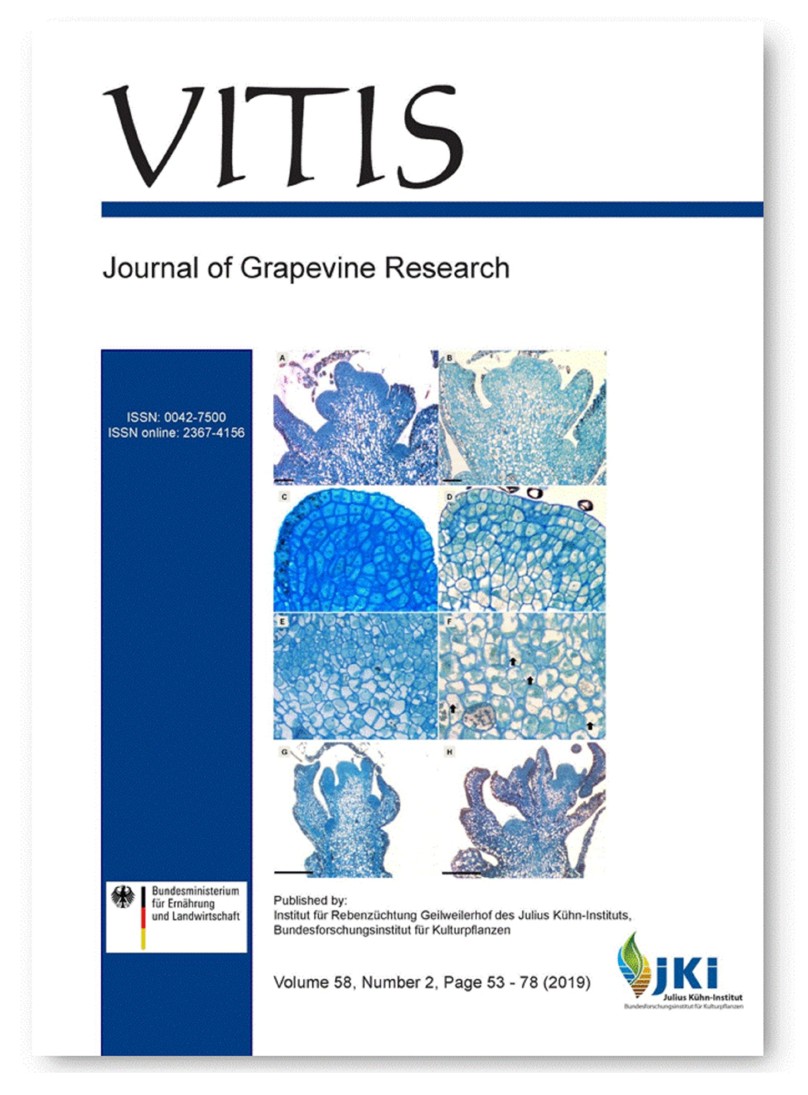Reproductive potential of the functionally female native Croatian grapevine 'Grk bijeli'
DOI:
https://doi.org/10.5073/vitis.2019.58.61-70Keywords:
Vitis vinifera; gametophyte; ovule; fertilisation; stenospermocarpy; parthenocarpy.Abstract
A native Croatian grapevine 'Grk bijeli', sharing a parent-offspring relationships with 'Tribidrag' (aka 'Zinfandel'), is grown exclusively on the Adriatic island of Korčula. It is one of the grape cultivars with female-only functional flowers, causing reduced fertilisation and leads to problems in grape production and wine quality. A typical cluster of 'Grk bijeli' at maturity contains fully developed seeded berries, in addition to a highly variable proportion of undersized seedless berries. The aim of this study was to identify the cause of the reduced reproduction potential of 'Grk bijeli' in order to establish a better growing environment for improved yield and grape quality. 'Grk bijeli' female gametophyte develops normaly and at maturity contains both egg and central cell, together with two synergid cells and three antipodal cells. On the other hand, 'Grk bijeli' pollen grains show developmental deviations. Specifically, most of the pollen grains undergo the first pollen mitosis and contain one vegetative cell and one generative cell, while 20 % of ungerminating grains also accomplish the second pollen mitosis, giving rise to two sperm cells and one vegetative cell. Morover, 'Grk bijeli' pollen has acolporate morphology, which prevents germination and contributes to reduced reproduction. Furthermore, fertilisation after pollination with other varieties results in various degrees of ovule abortion depending on the pollinator, revealing Croatian cultivars 'Plavac mali crni' and 'Pošip bijeli' as favourable varieties. Although this study describes a highly valuable cultivar of local importance, it also contributes to fundamental knowledge of grapevine reproductive biology and offers a strategy for improvement of wine production and oenological performance of semi-fertile varieties in general.
Downloads
Published
Issue
Section
License
The content of VITIS is published under a Creative Commons Attribution 4.0 license. Any user is free to share and adapt (remix, transform, build upon) the content as long as the original publication is attributed (authors, title, year, journal, issue, pages) and any changes to the original are clearly labeled. We do not prohibit or charge a fee for reuse of published content. The use of general descriptive names, trade names, trademarks, and so forth in any publication herein, even if not specifically indicated, does not imply that these names are not protected by the relevant laws and regulations. The submitting author agrees to these terms on behalf of all co-authors when submitting a manuscript. Please be aware that this license cannot be revoked. All authors retain the copyright on their work and are able to enter into separate, additional contractual arrangements.



